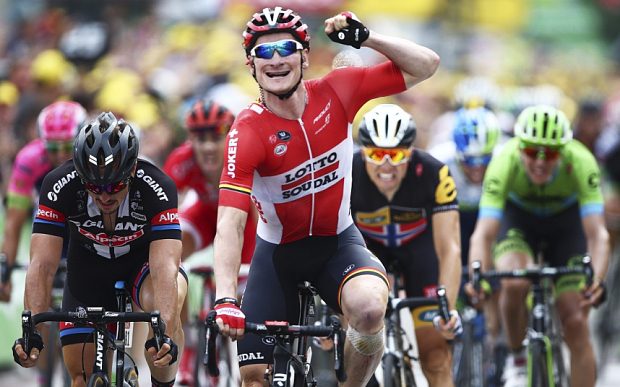2016 Tour de France Preview: the course
Six days until le grand départ

The 103rd Tour de France kicks off on Saturday with a stage that finishes at Utah Beach and concludes over three weeks later in Paris for the traditional circuits of the Champs Elysées. This season the big lap of France is counterclockwise and leans slightly towards the climbers.
It will be mainly a sprinter’s first week in the Grand Boucle, albeit with a Cat. 3 finish on Stage 2, but the final act of 216-km Stage 5 in the Massif Central features the gradual Col de Font de Cère climb, followed by a gentle descent before a kick-up to Le Lioran. Here, a Classics-style rider who has kept his nose in the sprints can nab the yellow jersey off one of the pure fast men.

Week one ends with serious climbing in the Pyrenees, with Cols d’Aspin, Tourmalet and Peyresourde on the menu, but only Stage 9 featuring a summit finish, the HC Arcalis grinder in Andorra.
Rest day one comes on July 11 between Stages 9 and 10. The sprinters will like the two days heading eastward through the south of France.
The next real test of the GC men comes on Stage 12’s Mont Ventoux. Ventoux is one of the Tour’s legendary climbs and certainly the grimmest. The Giant of Provence looms on Bastille Day for its 16th inclusion in the race. With a mind on the next day’s chrono, the riders will scale 15.7-km of 8.8% through a barren, pitiless and often windswept landscape.
Following the Giant comes the first of two time trials in a week—this one a rolling 37-km route in the Rhône Valley. Gradual climbing comes in the first 7-km and final 3-km. This is where Froome’s natural superiority in the race against the clock might swing the race in his favour.
Rest day two on July 19 ushers in four consecutive days in the Alps, beginning in Switzerland. On Stage 17 from Bern to Finhaut Émosson, the peloton faces two similar ascents at the end of the stage–the Col de la Forclaz and the haul up to the Émosson dam. The 2014 Dauphiné utilized the dam on a day when Contador distanced Froome, but Stage 17’s final scramble is being used for the first time in the Tour.
La Forclaz + Emosson = 23 km d’ascension à plus de 8% / = 23 km uphill at 8% average gradient #TDF2016 pic.twitter.com/zq7sFBNuBa
— Tour de France™ (@LeTour) October 20, 2015
The HC Émosson climb is 10.4-km of unrelenting 8.4% grade with 12% near its peak. French hopeful Thibaut Pinot says it’s a terribly hard ascent. Leading off the tough final week, the stage’s one-two gravity punch will invariably dash the podium hopes of a few riders.
The next day’s second time trial is a 17-km uphill affair with a 2.5-km section of 9.4%.
Although the Stage 19 summit finish on Mont Blanc 24-hours earlier will cause fireworks, Stage 20 from Megève to Morzine is the final day for riders to make their moves. The conclusion of the day is a wee ramp to Morzine, but first come four mountains spread over 146-km, including the Joux-Plane, which crests 12-km from the resort town. The tricky descent to Morzine is where Sean Kelly once hit 124 km/h and will elicit desperate downhill attacks.
ETAPE DU TOUR 2016 : MEGEVE-MORZINE ?
146 km, 4 cols… et toi ? / 146km, 4 climbs… & you?#LEtapeduTour pic.twitter.com/EBeZ4aA5uz— L'Étape du Tour de France (@letapedutour) October 20, 2015
There are always fine battles for GC positions on the penultimate day of the Tour de France, even if the overall winner is no longer in doubt. Trek’s Dutchman Bauke Mollema knows this very well, for he shuttled from eighth to seventh on 2015’s Stage 20 after dropping from 7th to 10th in 2014.
On July 24 the procession of the yellow-clad winner and most likely his specially kitted teammates makes its way to Paris from Chantilly. The cobbles of the Champs Elysées are the setting for final courage and one last sprinter’s tussle.
